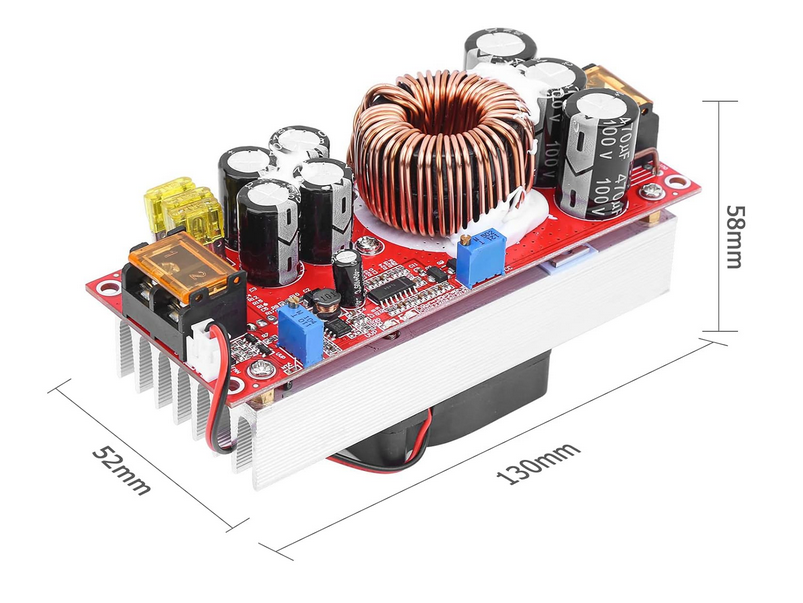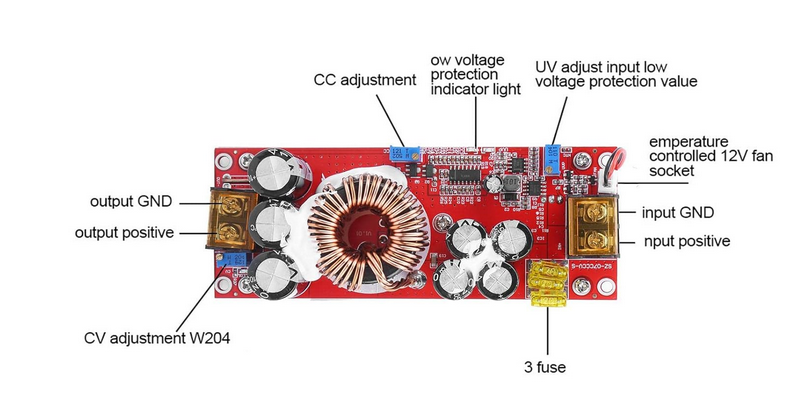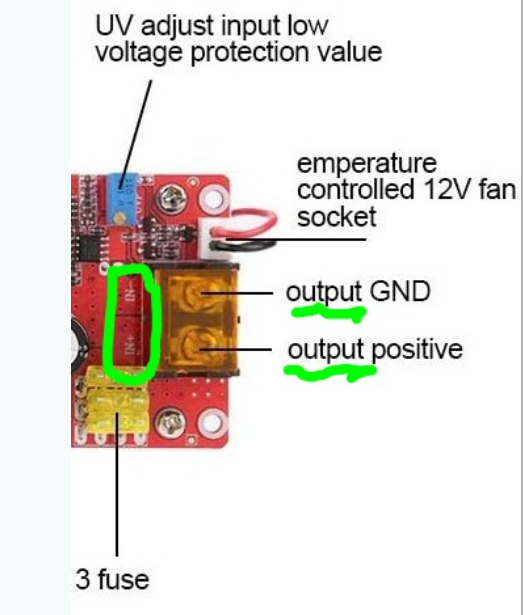Main menu
You are here
Batteries - home page
[last updated: 2025-06-06]
Li-ion batteries
LiFePO4 batteries
battery projects
-----
On This Page:
-------------------------------------------
- Battery C-rating:
The "C-rating" of a battery (at least usually but not always???) is its A-hr capacity divided by one hr (ie. same number, with units converted from A-hr to amps)
For example, a 2 A-hr battery will have a C rating of 2 amps.
When you specify what current (ie. amps) a given battery type (ie. its specific chemistry) can be charged or discharged with, you'll do so in multiples of C.
For example, a ... battery might be charged at 0.5C, and discharged at 0.1C. This means, say for a 2 A-hr battery (with C = 2a), you can charge it at a rate of 1a, and should discharge it at or below 0.2a.
Charging faster than recommended can overheat and explode. Discharging faster than recommended may also overheat, but mostly will damage the battery's future A-hr holding capacity.
------------------------------------------------------------------ - Coin Cells:
- Alkaline:
- Coin cells with ID's that start with 'L' are alkaline cells, with a nominal voltage of 1.5V.
- Alkaline batteries like LR1154 (aka LR44) is 11mm diam and 5.4mm thick.
- Lithium:
- Coin cells with ID's that start with 'C' are Lithium batteries, and have a nominal voltage of 3V.
- These batteries are "primary Lithium", rather than "Lithium-ion", and are Not rechargable.
- CR2020 coin cells are 20mm diam and 2.0mm thick
CR2016 are 20mm diam and 1.6mm thick
If the thicker one will fit into the holder, it will work just fine, with slightly longer life.
If the thinner one will fit snugly, it will work just fine, with slightly shorter life. - Amp-hr capacity:
[most of below is from: (link to:) batteriesAndButter ]
2032: Nominal rating: 230mAh (C = 0.23)- 230mAh at 1mA (0.005 C)
460mAh at 0.5mA (0.002 C)
150mAh at 3.0 mA1612: 40 mAh
1620: 75 mAh
1632: 125 mAh
2012: 55 mAh
2016: 90 mAh
1220: 35 mAh
- "standard" NiMH rechargable batteries are ~ 1.5v
lifespan: ~ 1000 cycles
heavier, lower power capacity
lower discharge rates
best to charge with a pulse charger
charge at 1.5C
------------------------------------------------------------------ - Battery Booster:
- This is a "buck/boost" circuit. You connect it between your battery and your device being powered.
It increases ("boost") or decreases ("buck") the net battery output voltage that is sent to your device,
in order to guarantee a desired optimum voltage level to your device. - There are a lot of options available in low power applications, like desktop electronics projects,
but few (at least inexpensive) available for higher power. - I did however find a 30a device on Amazon that I can potentially use in my ham go-box to give a constant 13.8v to my icom.
- Amazon listing:
- Boost Module, DC-DC 10-60V to 12-97V 1500W 30A
Voltage Step Up Converter Boost
Constant Voltage Constant Current Power Supply ModuleThe listing also cautions: "Frequently returned."
Mfr listed as: Jadeshay - Instructions from Mfr:
- Module output should not short circuit or measure current directly with multimeter short circuit, short circuit will burn out module.
- Under voltage adjustable range:DC10V-50V (clockwise to increase, counterclockwise to reduce),
first adjust under-voltage to minimum (CCW), then adjust input voltage to required under-voltage protection value,
slowly adjust under-voltage value clockwise to increase;
when the under-voltage light is on, adjust counterclockwise of one circle, then power on again.
Input under-voltage protection used when input power source is battery, to prevent battery from over-discharging .
Low battery voltage will damage power module and battery.
When input is switching power supply, it also need to set the low voltage protection. - Constant voltage adjustable range: C12-97V(clockwise to increase, counterclockwise to reduce),
first adjust voltage to the required voltage and then connected to the load. - Constant current adjustable range:0.8-22A (clockwise to increase and counterclockwise to reduce),
first disconnect load, then adjust output voltage to required voltage,
adjust current to the minimum (counterclockwise turn CC potentiometer about 30 circles),
connect an ammeter in series to the output, then slowly adjust current.(booster module cannot directly adjust current by short circuit) - Input voltage should not be lower than 10V or higher than 60V, (when input voltage is lower than 12V, please properly reduce the load).
- Make sure the input voltage is at lease 2V lower than output voltage.
- If use switching power supply, make sure that power is 1.3 times greater or more than the power supply module's power.
- During over current or under-voltage protection, output will still have voltage that is close to the input voltage,
protection means no boosting voltage.
-
- Note the last image from a review suggests that the board is mis-labeled,
with output and input terminals reversed...
HOWEVER my testing showed terminals are in fact correctly labeled. - The unit has 3@ 20a fuses (mini-blade type)
- My tests:
- Initially ignoring potential of the inputs and outputs being reversed...
Per mfr instructions, adjusted low-input-voltage pot fully CCW (minimum)
Connected variable bench supply to input (as labeled on board), set to about 5v
Indeed the low-input-voltage LED came on - Gradually increased input supply voltage from bench supply,
and indeed at about 10v, the low-input-voltage LED went out.
At that time a red LED near output came on, but did not measure actual output voltage at terminal. - Adjusted output voltage pot ("CV") to minimum (CCW), which should be 12v.
Adjusted output current pot ("CC") to minimum (CCW), which should be 0.8a.
However this did not work for me, so I had to increase about 2 turns CW
to get any controllable response at output.
Connect 12v to input.
With no load, but with voltmeter attached to output,
incrementally increase CV pot to reach desired output voltage.
(JWID) increase CC pot several turns CW.
- Initially ignoring potential of the inputs and outputs being reversed...
- Amazon listing:
------------------------------------------------------------------
- This is a "buck/boost" circuit. You connect it between your battery and your device being powered.
- Making packs of multiple batteries for higher voltage or capacity:
- If you have a battery pack made up of some number of batteries in parallel,
and you charge it (ie. all batteries in the pack are getting charged at the same time),
then the amount of charge each battery receives will depend on its internal resistance. - If some batteries in your pack are eg. much lower resistance than other batteries,
then they will end up being more fully charged than other batteries in your pack that have higher internal resistance. - In order to keep your battery pack balanced, with all batteries about the same charge,
all batteries in your pack should have about the same internal resistance. - If your pack is not balanced, you can help the situation by breaking apart the pack and charging each battery by itself. Of course this might not be convenient.
- Measuring battery internal resistance:
- For starters, measuring DC resistance as below is only a reference point
that can be used to compare batteries, or compare how a battery ages over time and use.
DC resistance ignores effects of internal or external circuit capacitance and inductance and frequency. - Vbu = battery voltage unloaded
Vbl = battery voltage under load
Rl = load resistance
Rb = battery internal resistance
then:
Rb = (Vbu – Vbl) * Rl / Vbu - Another method uses a small AC signal...
- Internal resistance of a lead-acid 12v battery should be on the order of 10 - 50 milli-ohms.
As a battery ages/degrades, its internal resistance increases. - See also: (link to:) Battery University
- Misc Notes:
- Max charge current (amps) for lead-acid batteries is 25% of AHr capacity
- AH rating: determine how long it takes to discharge to ~50 percent capacity.
------------------------------------------------------------------
------------------------------------------------------------------
------------------------------------------------------------------
.
.
.
eof


